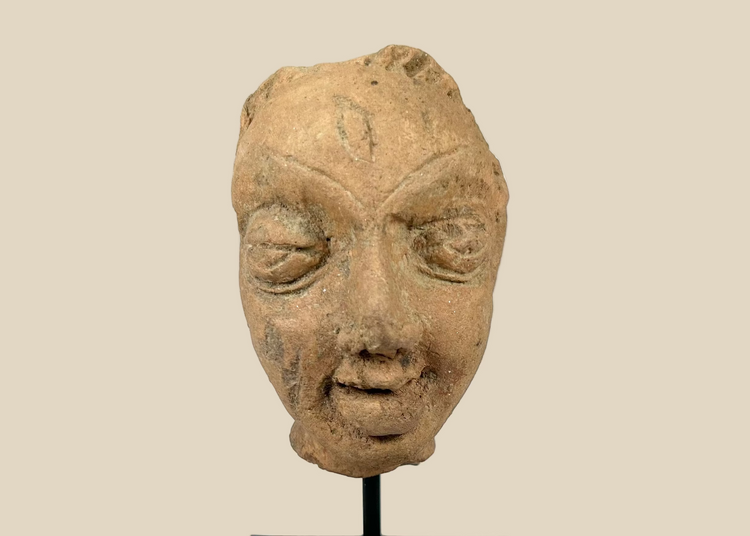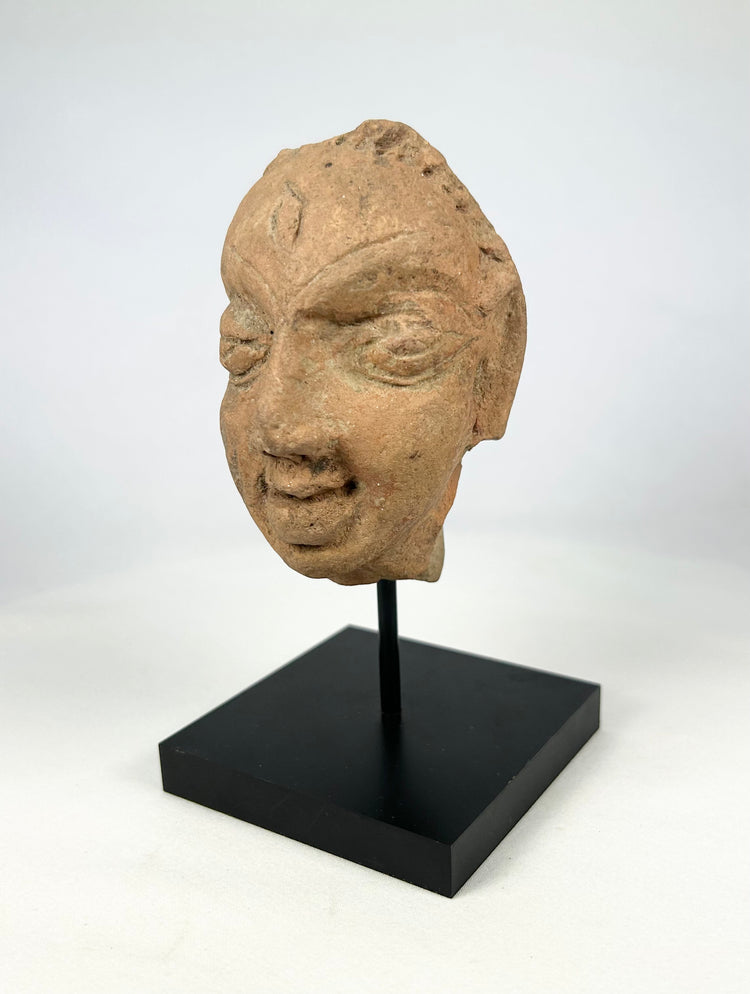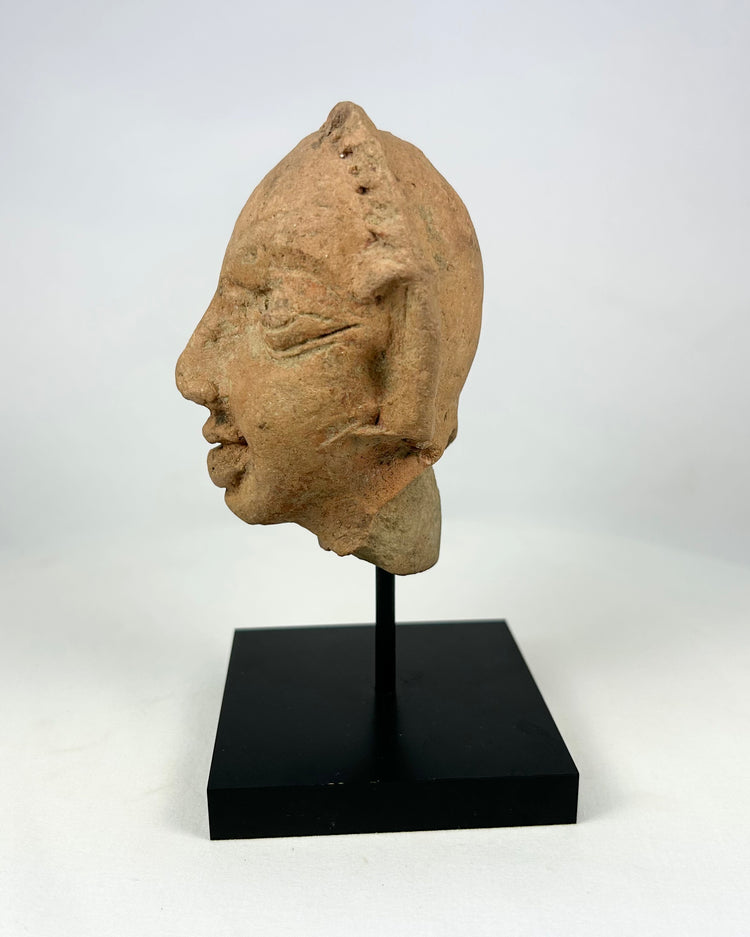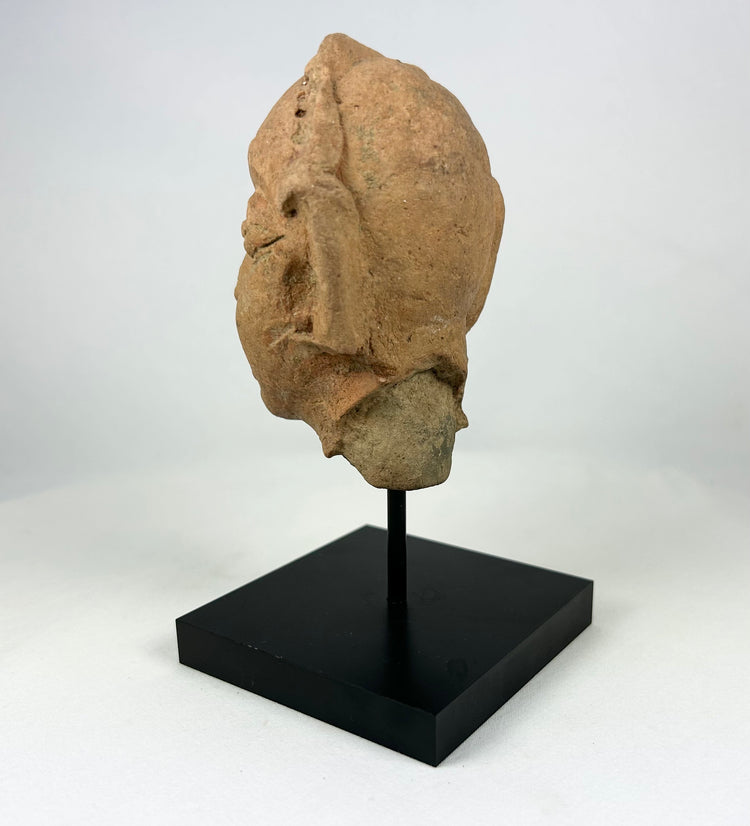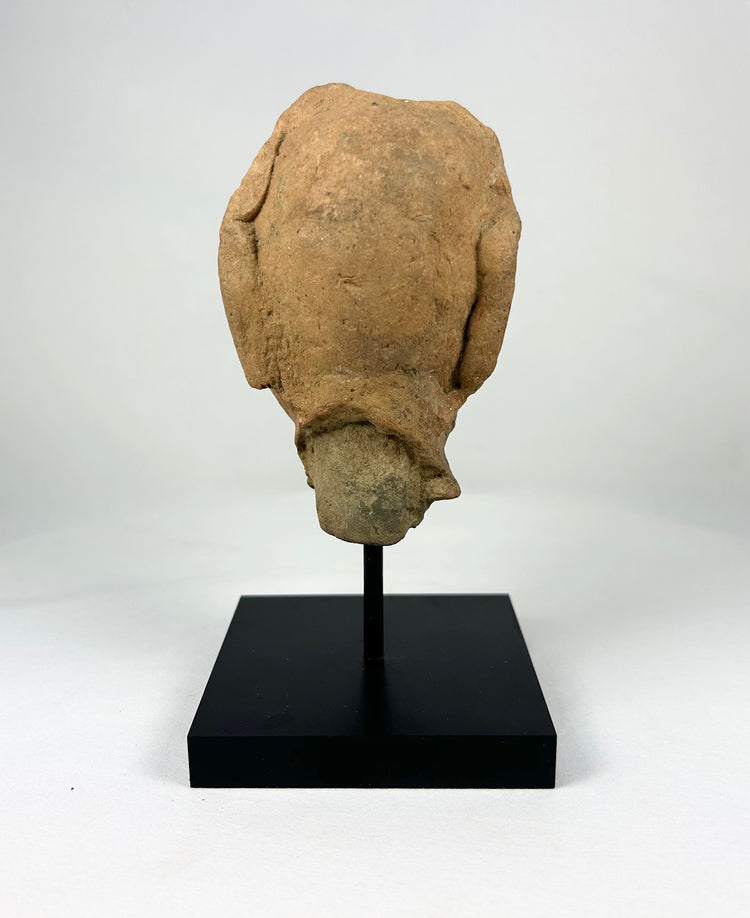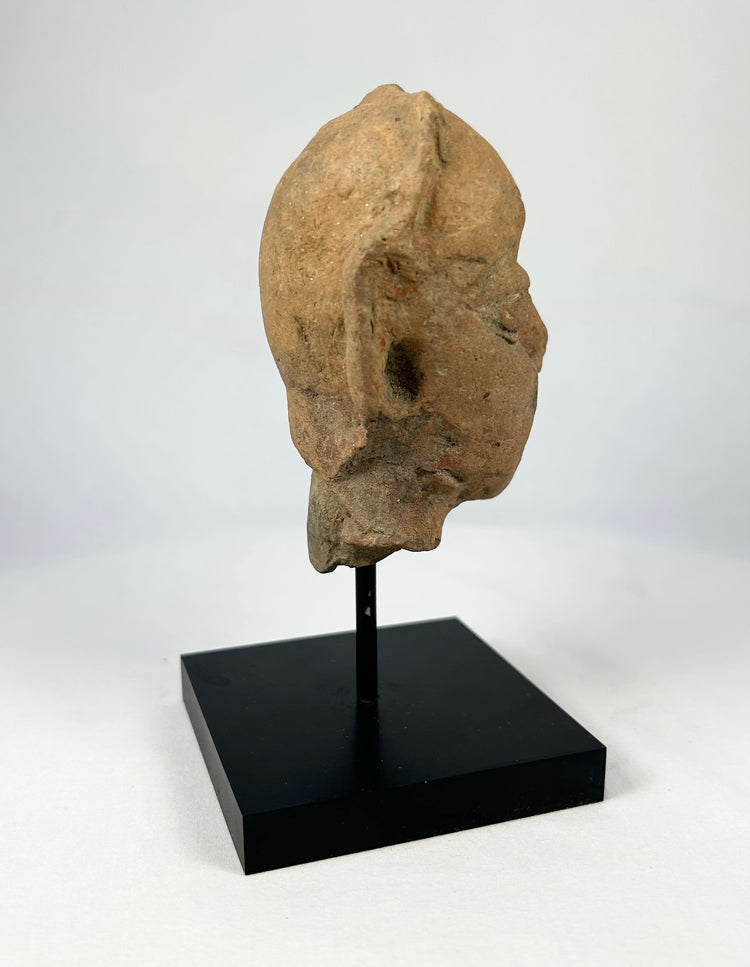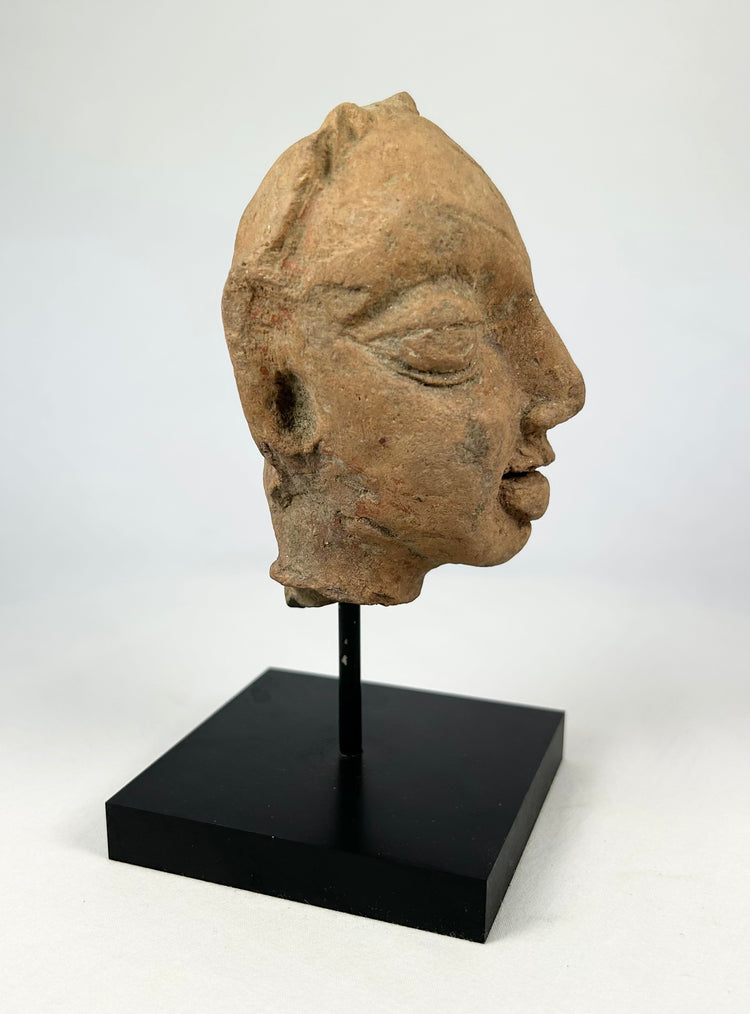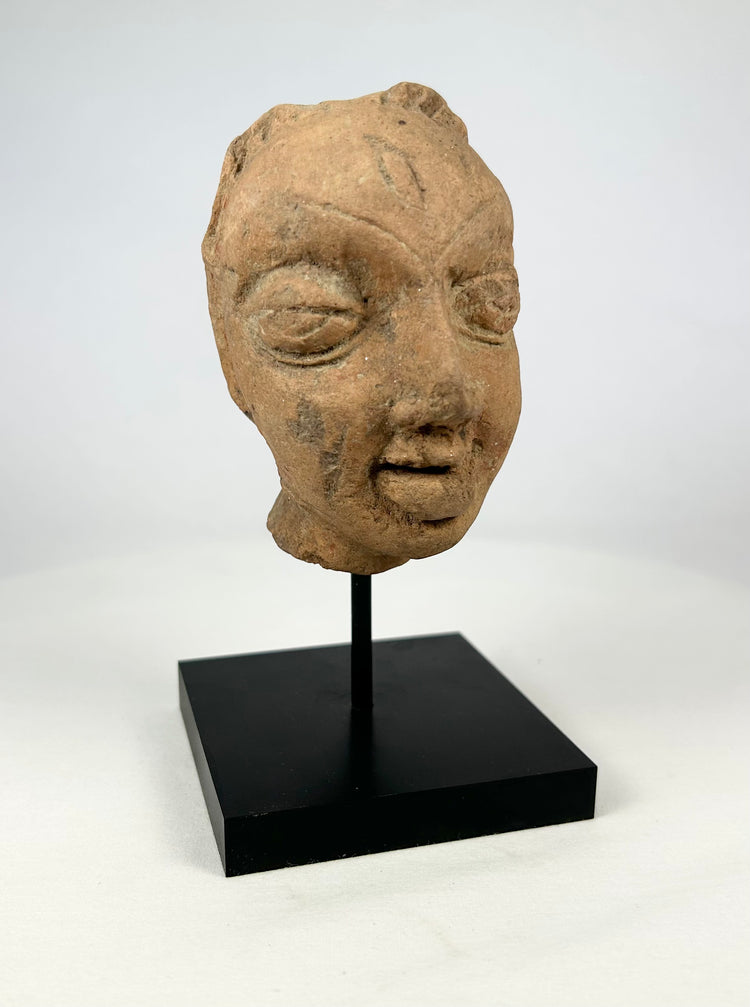Ancient Indian Religious Sculpture | Head Fragment | 3rd–5th Century CE
Description
More
Less
Historical Context & Origin
Region: Northern India (likely Mathura or related cultural centers)
Material: Terracotta with traces of pigment
Period: 3rd–5th Century CE (Gupta Period)
Description
A devotional terracotta head fragment from the Gupta period, widely regarded as the “Classical Age” of Indian art and culture. The head displays the serene Gupta aesthetic with heavy-lidded almond-shaped eyes, gracefully arched brows, and softly smiling lips, embodying the idealized spiritual introspection of the era. Once part of a larger temple or votive figure, this piece reflects the refined artistry that distinguished Gupta sculpture from earlier, more rigid forms.
Features
- Hand-modeled terracotta head fragment, mounted on a custom display stand
- Characteristic Gupta stylistic features: almond-shaped eyes, arched brows, soft lips
- Likely a fragment of a deity, celestial, or votive figure used in religious devotion
- Warm earthen tones with mineral deposits consistent with archaeological age
- Mounted for preservation and elegant display
Cultural Significance
Gupta terracottas are celebrated for their expressive refinement, bridging popular devotional art and classical religious sculpture. These figures, produced for temples and households, conveyed both accessibility and sacred presence. Surviving heads are rare and highly prized as enduring links to one of India’s greatest cultural and artistic epochs.
Condition
Fragmentary but stable condition with losses at the back and sides of the head. Surface wear, encrustations, and mineral accretions consistent with archaeological recovery. Mounted securely on a modern stand for safe handling and display.
Dimensions (approximate)
Height: 5.5 in
Age
3rd–5th Century CE, Gupta Period
Learn More
Deepen your understanding of Gupta-period Indian sculpture and the sacred artistry of early Buddhist devotional imagery: Gupta Buddha Imagery & Spiritual Masterpieces – Stanford Buddhist Studies
Explore more cultural, religious, and ethnographic artifacts from ancient civilizations around the world: Cultural & Ethnographic Artifacts Collection – Relic And Rarity
Description
Historical Context & Origin
Region: Northern India (likely Mathura or related cultural centers)
Material: Terracotta with traces of pigment
Period: 3rd–5th Century CE (Gupta Period)
Description
A devotional terracotta head fragment from the Gupta period, widely regarded as the “Classical Age” of Indian art and culture. The head displays the serene Gupta aesthetic with heavy-lidded almond-shaped eyes, gracefully arched brows, and softly smiling lips, embodying the idealized spiritual introspection of the era. Once part of a larger temple or votive figure, this piece reflects the refined artistry that distinguished Gupta sculpture from earlier, more rigid forms.
Features
- Hand-modeled terracotta head fragment, mounted on a custom display stand
- Characteristic Gupta stylistic features: almond-shaped eyes, arched brows, soft lips
- Likely a fragment of a deity, celestial, or votive figure used in religious devotion
- Warm earthen tones with mineral deposits consistent with archaeological age
- Mounted for preservation and elegant display
Cultural Significance
Gupta terracottas are celebrated for their expressive refinement, bridging popular devotional art and classical religious sculpture. These figures, produced for temples and households, conveyed both accessibility and sacred presence. Surviving heads are rare and highly prized as enduring links to one of India’s greatest cultural and artistic epochs.
Condition
Fragmentary but stable condition with losses at the back and sides of the head. Surface wear, encrustations, and mineral accretions consistent with archaeological recovery. Mounted securely on a modern stand for safe handling and display.
Dimensions (approximate)
Height: 5.5 in
Age
3rd–5th Century CE, Gupta Period
Learn More
Deepen your understanding of Gupta-period Indian sculpture and the sacred artistry of early Buddhist devotional imagery: Gupta Buddha Imagery & Spiritual Masterpieces – Stanford Buddhist Studies
Explore more cultural, religious, and ethnographic artifacts from ancient civilizations around the world: Cultural & Ethnographic Artifacts Collection – Relic And Rarity
You May Also Like
























